This Japanese rice cultivation model to reduce emissions has a scale of 50 hectares, deployed in Nam Thai Son commune (Hon Dat district, Kien Giang province), under the Central Agricultural Extension Project "Building a rice cultivation model to reduce emissions to serve the sustainable development of rice export material areas of the Mekong Delta".
Pursuant to Decision No. 1490/QD-TTg dated November 27, 2023 of the Prime Minister approving the Project "Sustainable development of 1 million hectares of high-quality and low-emission rice cultivation associated with green growth in the Mekong Delta region by 2030" (1 million hectares of rice project), the People's Committee of Kien Giang province issued Plan No. 10/KH-UBND dated January 16, 2024, assigning the Department of Agriculture and Rural Development to direct the implementation of the Project.
Accordingly, in the 2024-2025 winter-spring crop, 300 hectares of rice have been deployed in the province according to the Project in 6 districts (Tan Hiep, Chau Thanh, Giong Rieng, Go Quao, Hon Dat, Giang Thanh). This is an important basis and key for districts in the province to build a farming model that synchronously applies advanced solutions in rice cultivation to increase income, reduce emissions, protect the environment and develop sustainably.
In particular, Vinacam Hon Dat Agricultural Cooperative (Nam Thai Son, Hon Dat district) is the unit selected to implement the demonstration model under the Central Agricultural Extension project "Building a model of rice cultivation to reduce emissions to serve the sustainable development of rice export material areas of the Mekong Delta".
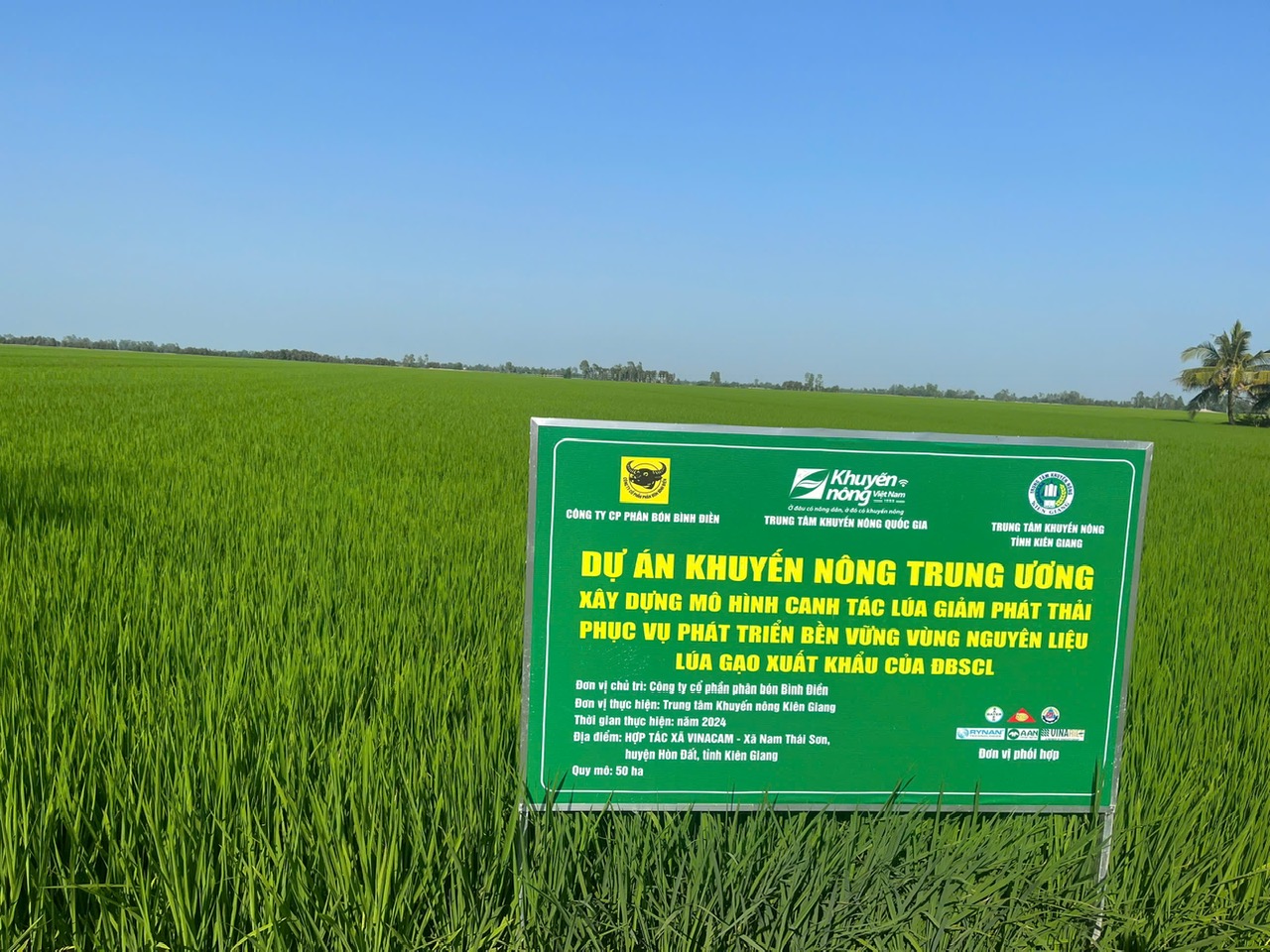
A 50-hectare rice field is growing well at Vinacam Hon Dat Agricultural Cooperative, Nam Thai Son Commune (Hon Dat District, Kien Giang) within the framework of the Central Agricultural Extension Project "Building a model of rice cultivation to reduce emissions to serve the sustainable development of the rice export material area of the Mekong Delta". Photo: V.Đ
The model aims to build 100 hectares of quality rice to meet the requirements of domestic and export markets, with an average yield of ≥ 6.2 tons/ha, a growing area code, and input costs reduced by at least 15% (seeds, fertilizers, pesticides, labor) compared to the general market.
The cooperative also hopes to build 2 production management organization models linking the cooperative with product consumption enterprises associated with the Community Agricultural Extension Team and sustainable development; economic efficiency ≥15% compared to mass production, thereby replicating the model ≥ 30% compared to the total approved project scale.
Mr. Danh Suong, Director of the Cooperative, said that the pilot model was deployed on an area of 50 hectares, with 10 participating households. The rice variety sown was the Japanese rice variety DS1 certified by Vinarice, level 1. Sowing was done with the Saigon Kim Hong cluster seeder; Using specialized fertilizers from BFC; Much - More - Rice pest management process to produce clean rice from BAYER; Linking consumption with Tan Long Group...
Before implementation, the cooperative and participating households were thoroughly trained in the technical process of producing high-quality and low-emission rice in the Mekong Delta. The process of collecting and processing straw in the direction of circular agriculture; Building brands and codes for rice growing areas... At the same time, 2 seminars were organized to link product consumption between businesses and cooperatives.
After the training, trainees will have basic knowledge of rice production techniques applying mechanization to production, apply technical processes and standards to production, and be able to apply technical processes and standards to farming households and propagate and mobilize other households to participate.
In addition, Vinacam Hon Dat Agricultural Cooperative has also developed management regulations and operating regulations for the production and business management organization model, linking product consumption. In particular, the Cooperative has expanded its area to 438ha/50ha compared to the approved plan (plan 50ha, implemented 438ha).
On March 27, Vinacam Hon Dat Agricultural Cooperative organized the harvest of rice grown according to the model. The results showed that the rice yield in the model reached 10.2 tons/ha, while outside the model it reached 9.8 tons/ha.
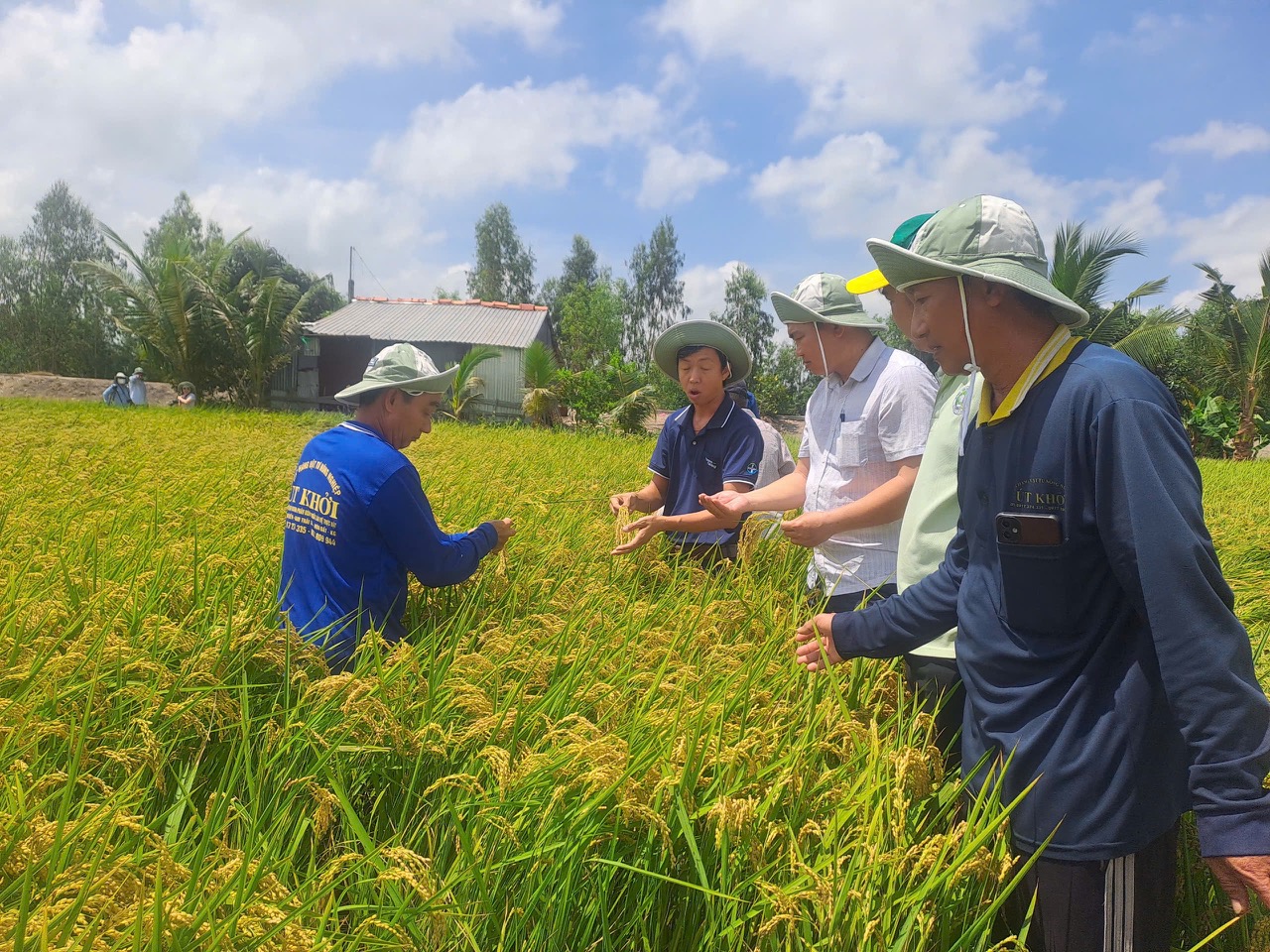
Officials of Vinacam Hon Dat Agricultural Cooperative, along with a team of agricultural extension officers and engineers, visited rice fields within the framework of the Central Agricultural Extension Project "Building a model of rice cultivation to reduce emissions to serve the sustainable development of the rice export material area of the Mekong Delta". Photo: V.Đ
Mr. Danh Suong said that during the model implementation process, participating farmers applied the technical process of producing high-quality and low-emission rice in the Mekong Delta region according to Decision No. 145/QD-TT-CLT dated March 27, 2024 of the Department of Crop Production, applying Biocalcium fertilizer + Organic fertilizer: 350kg/ha.
The amount of nitrogen fertilizer applied in the model averaged 104.5 kg/ha; phosphate fertilizer decreased by 18.2 kg/ha, potassium decreased by 33.4 kg/ha... Accordingly, the model saved a total of 112.7 kg of NPK fertilizer/ha compared to outside the model, while using Biocalcium fertilizer as basal fertilizer and adding organic fertilizer helped increase soil pH above 6.0, helping soil microorganisms develop, stimulating rice plants to grow well, with fewer pests and diseases - a premise for increasing productivity, reducing costs and increasing economic efficiency.
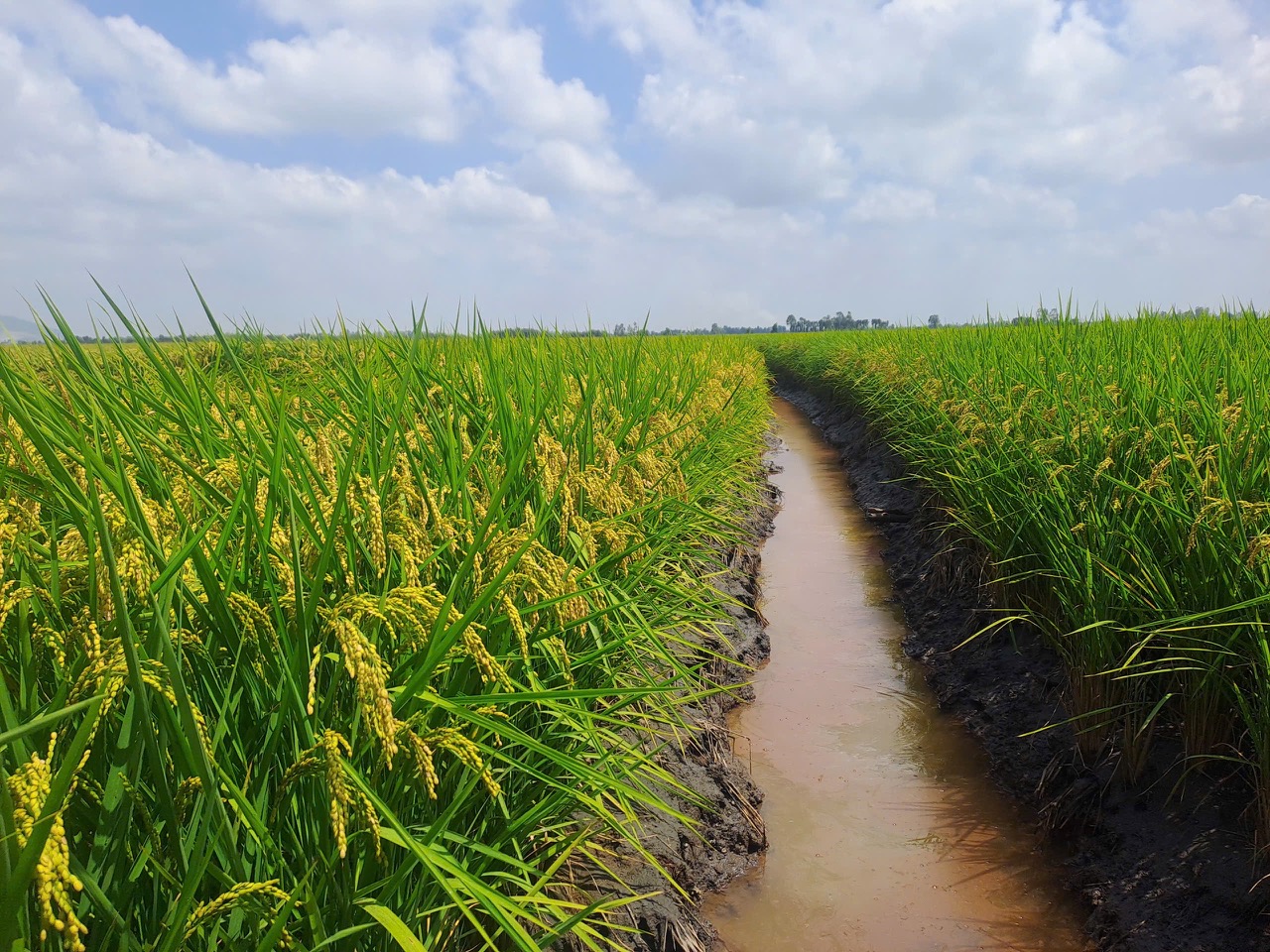
Farmers participating in the model in the cooperative apply the correct process, managing water using the alternating wet and dry method.
The model applies the integrated pest management (IPM) process on the basis of integrated plant health management (IPHM). Comply with the 4 rights principle in using pesticides (right drug, right dose and concentration, right time and right method).
In general, the weather conditions in the 2024-2025 Winter-Spring crop are quite favorable and the fields in the model apply the sparse sowing process and balanced fertilization, so the need for pesticide spraying is reduced by 3 times (1 time for fungicides and 2 times for pesticides) compared to fields outside the model.
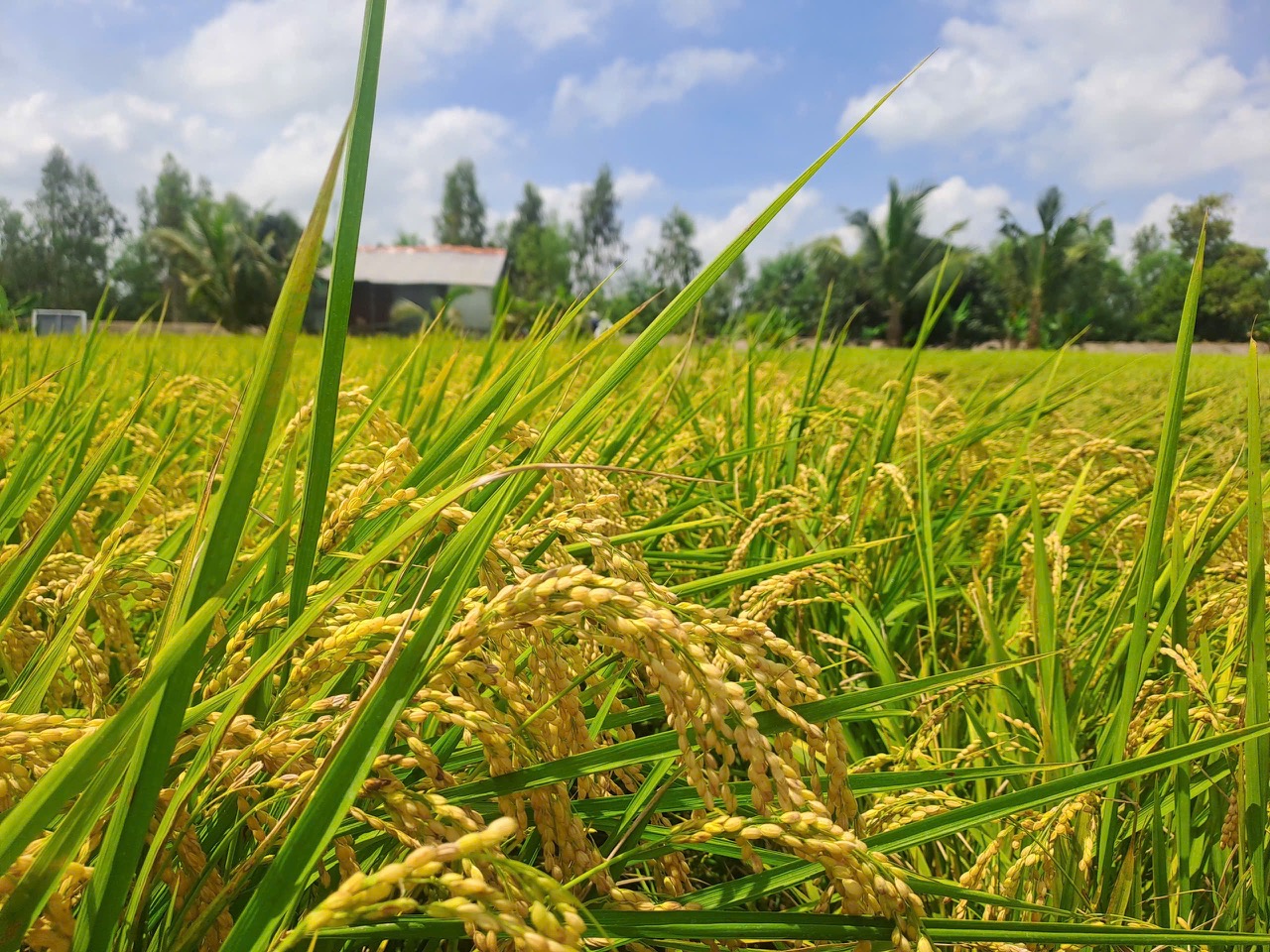
The model was implemented with the support and guidance of the Vietnam Institute of Agricultural Environment and staff of the Agricultural Extension Center. Monitoring and arranging the MRV measurement area by hand and AWD sensor tubes; Monitoring 100% of participating households and calculating emissions according to the IPCC method. Photo: V.Đ
Farmers participating in the model adhered very well to the alternating wet and dry water management process according to process 145 and made adjustments for the Japonica variety group (growing time 115 - 120 days).
According to the report of the Cooperative, the total production cost in the model is 26,688,450 VND/ha, 1,871,550 VND/ha lower than outside the model (28,560,000 VND/ha). The reason for the reduction in production costs is that the Cooperative has reduced the amount of seeds sown using the Saigon Kim Hong cluster seeder, reduced the number of times pesticides and fertilizers are sprayed, etc.
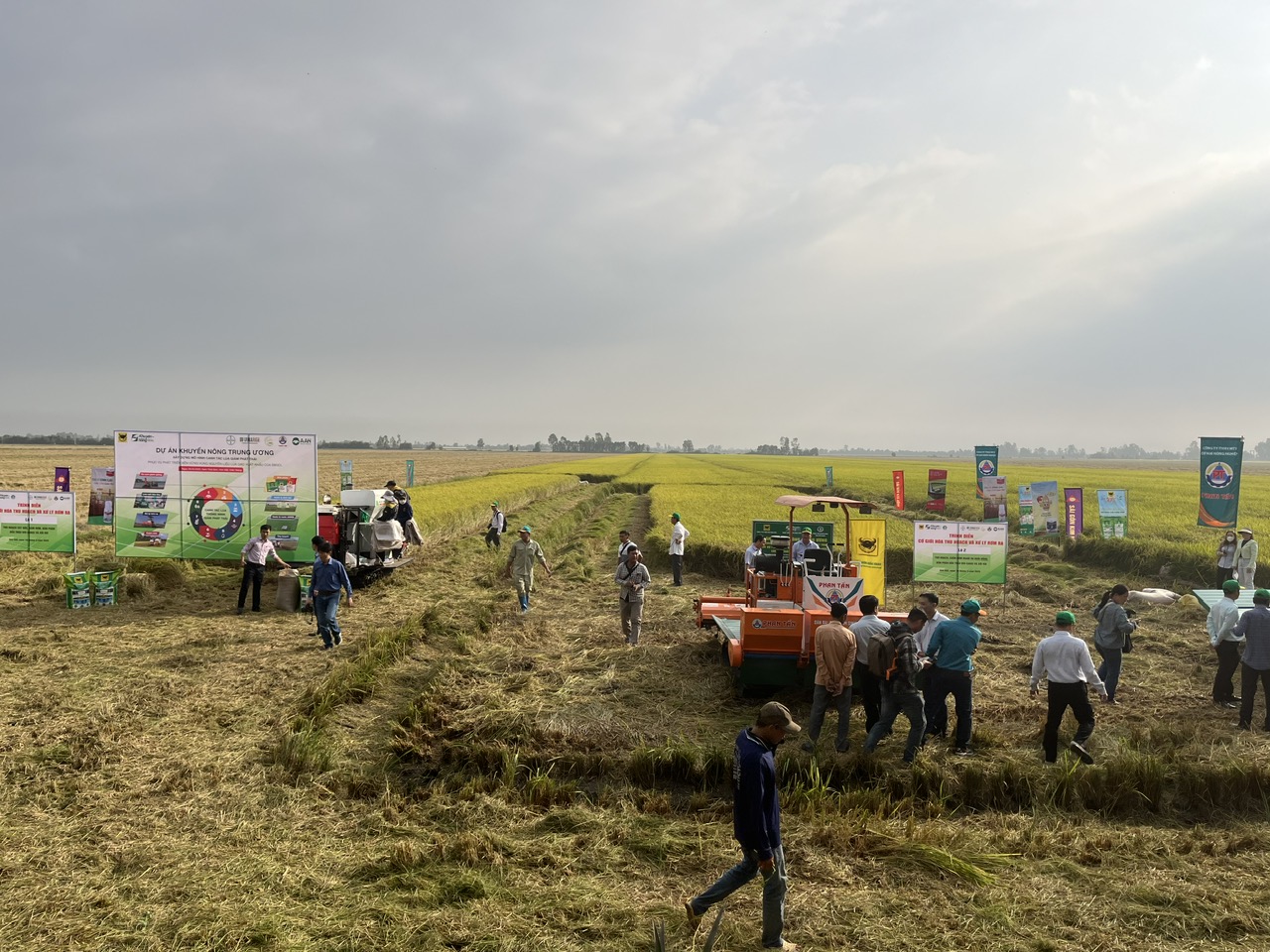
Harvesting rice by machine at Vinacam Hon Dat Agricultural Cooperative. Photo: V.Đ
Immediately after harvest, the rice is purchased by the enterprise, and farmers earn "cash and rice" when they see that the economic efficiency of the model is higher than that of the control area. Specifically, the economic efficiency in the model reaches 55,511,550 VND/ha, 6,686,550 VND/ha higher than outside the model (48,825,000 VND/ha). The model has a profit margin of 208% and increases 37% more than outside the model.
Thanks to farmers participating in the model in the cooperative applying the correct process and managing water using the alternating wet and dry method, 13,050 tons of CO2t/ha of emissions were reduced compared to baseline emissions.
"During the implementation process, we applied synchronous mechanization in 100% of the area in sowing, caring for and harvesting rice. The project results have brought practical results to farmers, reducing production costs, increasing productivity, quality, and increasing economic efficiency. People participating in the model are very excited, so when the model is expanded, it will certainly have many prospects," said Mr. Suong.
Source: https://danviet.vn/trong-lua-nhat-theo-quy-trinh-giam-phat-thai-de-bong-nang-triu-nong-dan-mot-xa-o-kien-giang-thu-tien-tuoi-20250328075442069.htm


![[Photo] Many young people patiently lined up under the hot sun to receive a special supplement from Nhan Dan Newspaper.](https://vphoto.vietnam.vn/thumb/1200x675/vietnam/resource/IMAGE/2025/5/18/6f19d322f9364f0ebb6fbfe9377842d3)




![[Photo] Ready for the top competitions of Vietnamese table tennis](https://vphoto.vietnam.vn/thumb/1200x675/vietnam/resource/IMAGE/2025/5/18/9c547c497c5a4ade8f98c8e7d44f5a41)


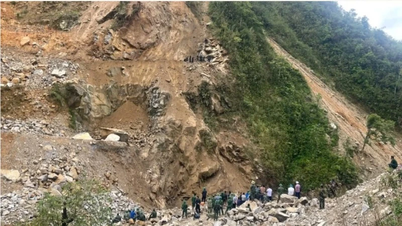

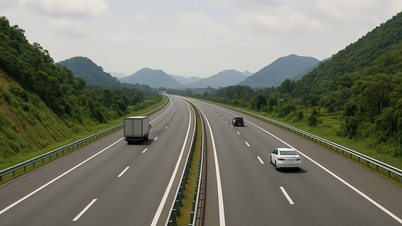
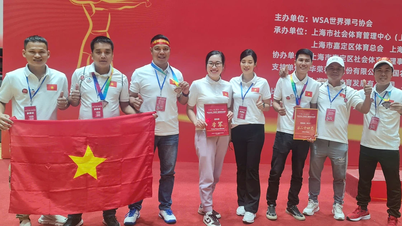
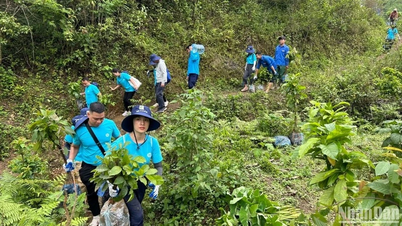
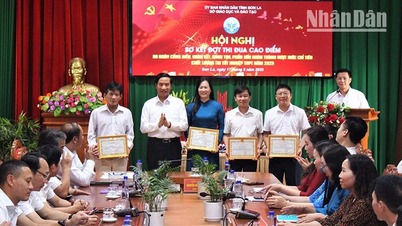






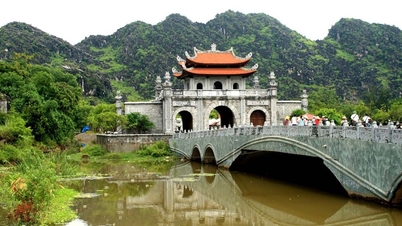
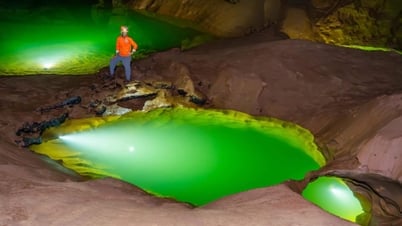
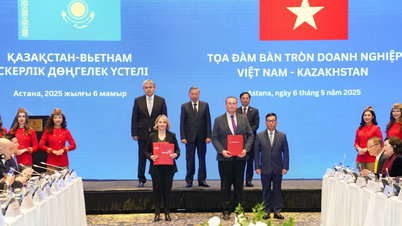

![[Photo] General Secretary To Lam visits exhibition of achievements in private economic development](https://vphoto.vietnam.vn/thumb/1200x675/vietnam/resource/IMAGE/2025/5/18/1809dc545f214a86911fe2d2d0fde2e8)



















































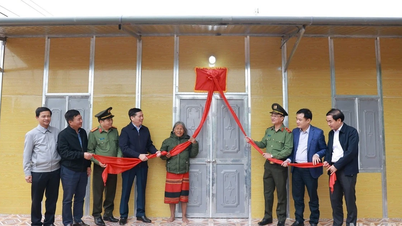

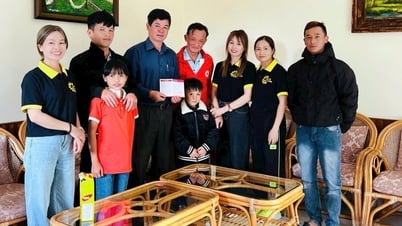

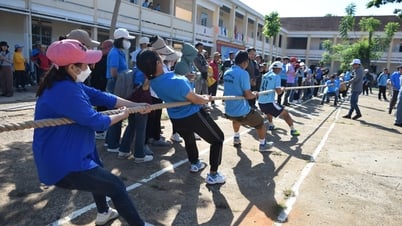
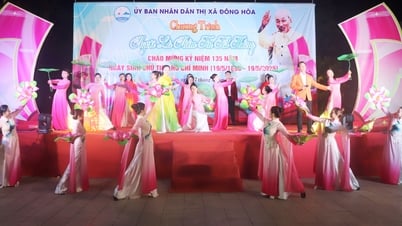










Comment (0)